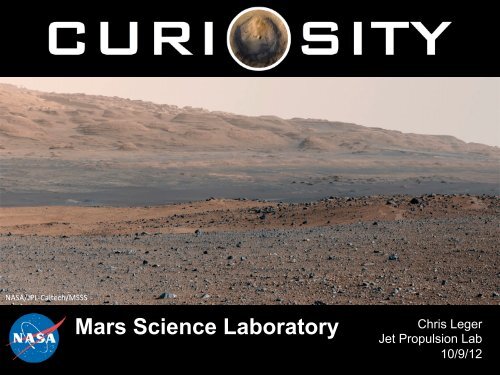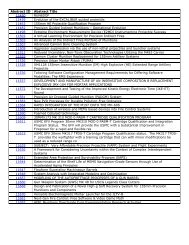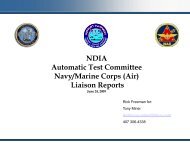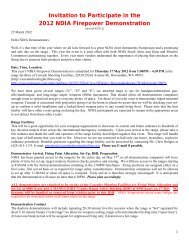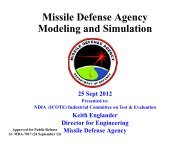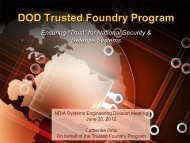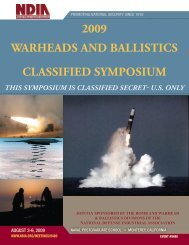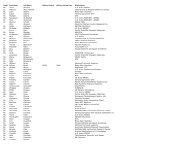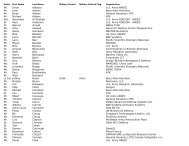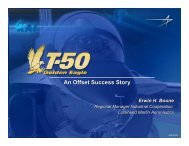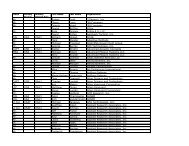You also want an ePaper? Increase the reach of your titles
YUMPU automatically turns print PDFs into web optimized ePapers that Google loves.
NASA/JPL-‐Caltech/MSSS<br />
Mars Science Laboratory<br />
<strong>Chris</strong> <strong>Leger</strong><br />
Jet Propulsion Lab<br />
10/9/12
Curiosity’s primary scien1fic goal is to explore and<br />
quan1ta1vely assess a local region on Mars’ surface as a<br />
poten1al habitat for life, past or present<br />
• Biological poten1al<br />
• Geology and geochemistry<br />
• Role of water<br />
• Surface radia1on<br />
Curiosity’s Science Objectives<br />
NASA/JPL-‐Caltech
Mastcam<br />
(Imaging)<br />
REMS<br />
(Weather)<br />
DAN<br />
(Subsurface<br />
Hydrogen)<br />
SAM<br />
(Chemistry<br />
and Isotopes)<br />
ChemCam<br />
(Chemistry)<br />
CheMin<br />
(Mineralogy)<br />
RAD<br />
(Radiation)<br />
MARDI<br />
(Imaging)<br />
Curiosity’s Science Payload<br />
APXS<br />
(Chemistry)<br />
MAHLI<br />
(Imaging)<br />
Drill<br />
Scoop<br />
Brush<br />
Sieves
Robo5c Func5onality<br />
• 6-‐wheel rocker-‐bogie mobility (corner steering) – 10<br />
actuators<br />
– 3 redundant sets of stereo cameras (12 total – front, rear,<br />
mast)<br />
– Autonomous hazard avoidance and visual odometry<br />
• 5-‐DOF robo5c arm<br />
– Actuated scoop, sample processing, rock brush, and drill<br />
on end of arm (9 actuators), plus instruments<br />
• 2-‐DOF remote-‐sensing mast (with 1-‐DOF deployment)<br />
• 3 actuated inlet covers<br />
• Motor currents required: 100mA to 10A
Opera5ons<br />
• Similar model to previous Mars surface<br />
missions (Pathfinder, MER, Phoenix)<br />
– Team builds plan for 1 or more Mars days (“sols”),<br />
uplinks it<br />
– Spacecra[ executes plan, sends data back hours<br />
later (up to 2 orbiter relay passes in a[ernoon,<br />
and 2 more overnight)<br />
• Rover must be able to execute ac5vi5es and<br />
keep itself safe without operator interven5on
Assembled Spacecra[
NASA/JPL-‐Caltech<br />
Target: Gale Crater and Mount Sharp<br />
NASA/JPL-‐Caltech/ESA/DLR/FU Berlin/MSSS
150-‐km Gale Crater contains a 5-‐km high mound of stra5fied rock. Strata in the lower<br />
sec5on of the mound vary in mineralogy and texture, sugges5ng that they may have<br />
recorded environmental changes over 5me. Curiosity will inves5gate this record for clues<br />
about habitability, and the ability of Mars to preserve evidence about habitability or life.<br />
Target: Gale Crater and Mount Sharp<br />
?<br />
NASA/JPL-‐Caltech/ESA/DLR/FU Berlin/MSSS<br />
NASA/JPL-‐Caltech
NASA/JPL-‐Caltech/ESA<br />
Landing precision for Curiosity<br />
and previous Mars surface missions
NASA/JPL-‐Caltech/Univ. of Arizona<br />
Curiosity’s ultimate goal is to explore the<br />
lower reaches of the 5-km high Mount Sharp
NASA/JPL-‐Caltech/Univ. of Arizona<br />
Curiosity on parachute, imaged by<br />
HiRISE on the Mars Reconnaissance Orbiter
NASA/JPL-‐Caltech/MSSS<br />
Heat shield separation captured<br />
by Curiosity’s Mars Descent Imager
NASA/JPL-‐Caltech/Univ. of Arizona<br />
Curiosity and its tracks captured by<br />
HiRISE on the Mars Reconnaissance Orbiter
NASA/JPL-‐Caltech/MSSS<br />
Mastcam-34 mosaic of Mount Sharp, descent<br />
rocket scours, and rover shadow
Looking North to Crater Rim
NASA/JPL-‐Caltech/MSSS<br />
This boulder is the<br />
size of Curiosity<br />
Mastcam-100 image of Mount Sharp’s layers,<br />
canyons and buttes
NASA/JPL-‐Caltech/MSSS<br />
Curiosity images its undercarriage<br />
with its Mars Hand-Lens Imager
NASA/JPL-‐Caltech/LANL/CNES/IRAP/LPGN/CNRS<br />
Target: Beechey (Sol 19)<br />
Shots per point: 50<br />
Before AFer<br />
ChemCam’s laser induced breakdown<br />
spectrometer acquires a 5-point raster<br />
8 cm<br />
(3”)
Navigation camera<br />
mosaic of Curiosity’s<br />
robotic arm<br />
NASA/JPL-‐Caltech
NASA/JPL-‐Caltech/MSSS<br />
Images of Curiosity’s<br />
turret centered<br />
on MAHLI (left) and<br />
APXS (right)
Nested, hand-lens imaging of the 25-cm (10”)<br />
high rock Jake Matijevic<br />
NASA/JPL-‐Caltech/MSSS
Curiosity is progressing toward Glenelg,<br />
where three distinct terrain types meet<br />
NASA/JPL-‐Caltech/Univ. of Arizona
Ancient streambed deposits<br />
NASA/JPL-‐Caltech/MSSS
Wheel scuff<br />
to prepare<br />
for safe<br />
scooping<br />
NASA/JPL-‐Caltech
Acquiring soil sample with the scoop
SAM Inlet Covers
Scooping and Sample Processing
DTM Rover Touchdown Testing<br />
37
Robo5c Arm Calibra5on
Key Challenges<br />
• Power (100W on surface)<br />
• Thermal (survive temps down to -‐140C; operate over 100C range)<br />
– Actuators, mechanisms, sensors (encoders, resolvers, force sensors)<br />
• Radia5on<br />
– Rad-‐hard avionics – low-‐performance compared to consumer products<br />
– 133MHz main CPU, 20MHz auxilliary CPUs<br />
– 1553 bus<br />
• Volume / packaging<br />
– Internal rover volume<br />
– Stowing for launch/cruise/descent<br />
• Mass<br />
– Rela5vely compliant arm – 1cm accuracy requirement, ~10cm deflec5on<br />
• Low margins in mass/power/volume<br />
• Programma5c<br />
– Limited launch windows (once every 26 months)<br />
– Organiza5on: 3000+ people worked on Curiosity just at JPL<br />
– Deliverables defined by discipline (avionics, so[ware, mechanisms) instead of by subsystem (mobility,<br />
robo5c arm, etc.)<br />
• Complexity<br />
– Biggest challenge!<br />
– And no metrics!<br />
– Exacerbated by perceived benefits of highly-‐integrated system<br />
– Driven by volume/mass/packaging concerns<br />
– Results in extended (s5ll ongoing) test program and so[ware development


